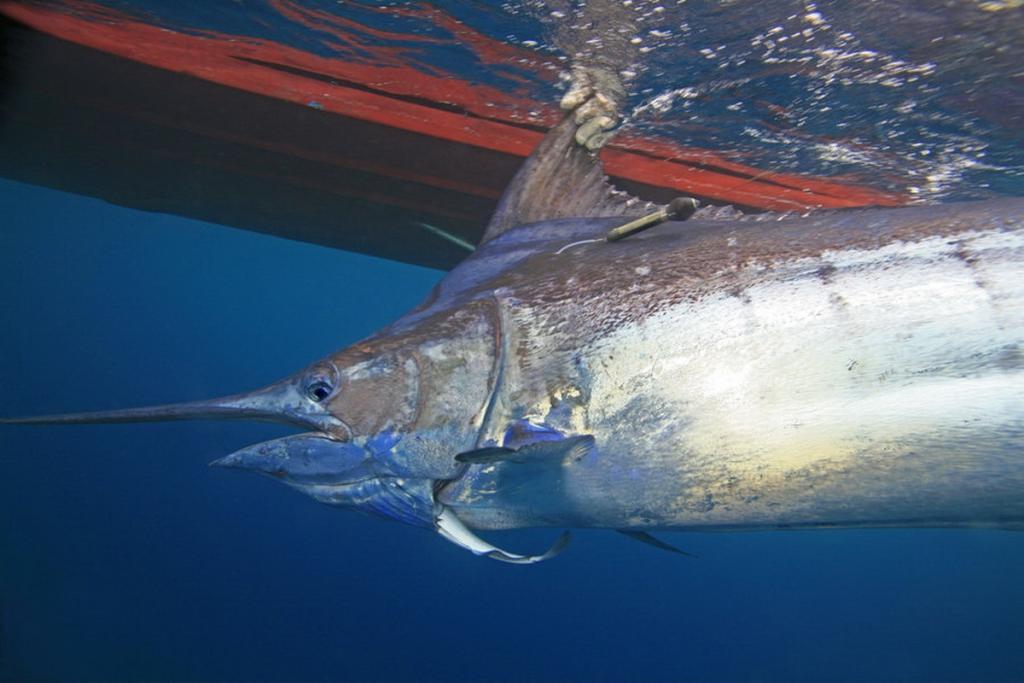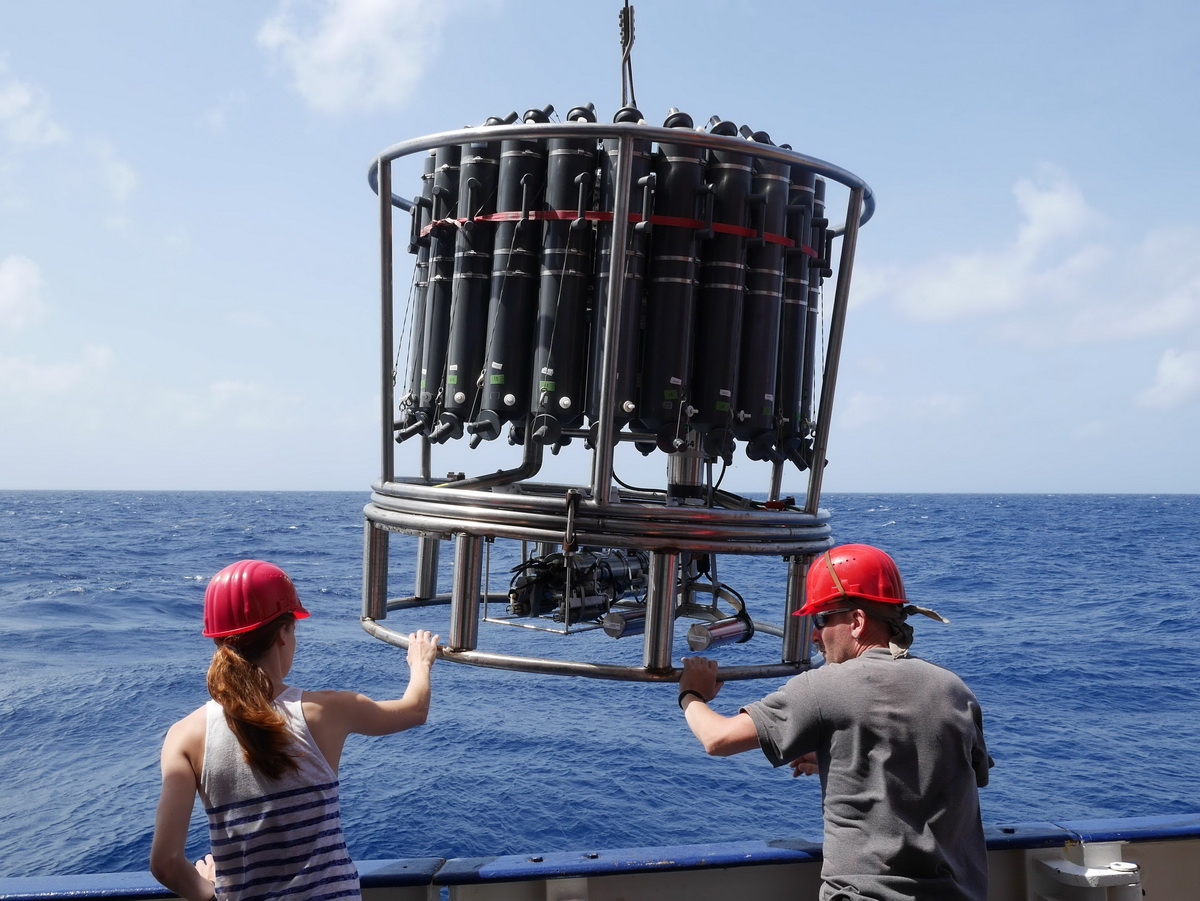
© Above all, large fish like this marlin are dependent on sufficient oxygen supply. Previous studies have already shown that their habitat is becoming smaller due to expanding oxygen minima.
(c) Bill Boyce

© The authors of the current study: Dr. Lothar Stramma, Dr. Sunke Schmidtko and Professor Martin Visbeck.
(c) Jan Steffen, GEOMAR

© A crane water cremator is launched by the research vessel "METEOR". For the current study, the authors have evaluated hundreds of thousands of historical and current oxygen measurements.
(c) Martin Visbeck, GEOMAR
Scientists quantify the state of global oceanic de-oxygenation
March 1, 2017
Global change leads to rising ocean temperatures and less oxygen
The current global change leads to rising ocean temperatures and changes in the ocean circulation. Hence, less oxygen is dissolved in surface waters and less oxygen is being transported to the depths of the sea. This drop in oceanic oxygen supply has serious consequences for organisms in the ocean.
Oxygen is necessary for all living organisms, both on land and in the ocean. The oxygen supply in the oceans is being threatened by global warming in two ways: Warmer ocean surfaces absorb less oxygen than colder waters. Secondly, warmer water stablises the stratification of the ocean, and this weakens the ocean circulation that connects the surface with the depths of the ocean, thus leading to less oxygen being transported to the ocean depths.
Many models predict a drop in global oceanic oxygen inventory of the oceans as a result of global warming.
This trend appears to be confirmed by the first global evaluation of millions of oxygen measurements and points to the initial impact of global change.
Oceanographers Dr Sunke Schmidtko, Dr Lothar Stramma and Prof Dr Martin Visbeck from GEOMAR Helmholtz Centre for Ocean Research have conducted the most comprehensive study into the global oxygen content in the world's oceans to date. The results of this study have recently been published in the Nature journal. It shows that the oxygen content has decreased by more than two percent over the last 50 years.
"Since large fishes in particular avoid or do not survive in areas with low oxygen content, these changes can have far-reaching biological consequences," said lead author Dr Schmidtko.
For the study, the researchers utilised all the historic oxygen data available worldwide, supplementing it with current measurements and refining the interpolation procedures to reconstruct the development of the oxygen budget over the past 50 years. In fact, some areas have already experiencing a decrease in oxygen.
According to Dr Schmidtko, "To quantify trends for the entire ocean, however, was more difficult since oxygen data from remote regions and the deep ocean is sparse. We were able to document the oxygen distribution and its changes for the entire ocean for the first time. These numbers are an essential prerequisite for improving forecasts for the ocean of the future."
The study shows that, with the exception of several regions, the oxygen content has dropped throughout the ocean during the time of the research.
"While the slight decrease of oxygen in the atmosphere is currently considered non-critical, the oxygen losses in the ocean can have far-reaching consequences because of the uneven distribution. For fisheries and coastal economies, this process may have detrimental consequences," said co-author Dr Stramma.
"However, with measurements alone, we cannot explain all the causes. Natural processes occurring on time scales of a few decades may also have contributed to the observed decrease," added Prof Visbeck.
Nevertheless, the findings are consistent with most model calculations that predict more oxygen decline in the oceans as a result of higher carbon dixoide content in the atmosphere, and consequently higher global temperatures.
Link to the study